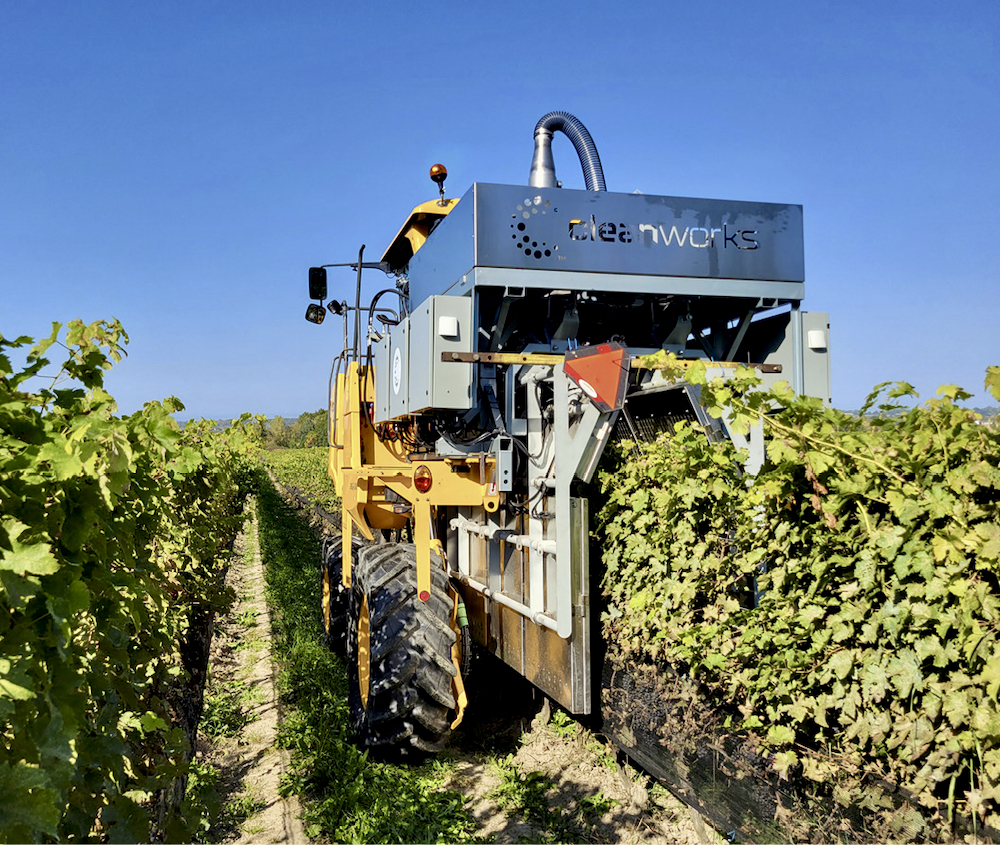An Ontario company whose technology could reduce the use of fungicides and extend the shelf life of produce has won a $1 million grand prize from the federal government.
See also


New faculty strengthens expertise in field crop entomology
Dr. Jocelyn Smith is a new assistant professor of field crop entomology at Ridgetown University. The University of Guelph stated in their announcement…
Why it matters: The technology extends the shelf life of produce by up to 20 percent and reduces food waste.
St. Catharines-based Cleanworks was named one of two winners in the New Technology category of the Canadian Food Waste Reduction Challenge. The company's proprietary system uses vaporized hydrogen peroxide, ozone and ultraviolet light to inhibit mold and microbial growth on pre-harvest fruits and vegetables.
This extends the shelf life of produce by up to 20 per cent, Clean Works estimates, preventing the waste of around 50 tonnes of grapes and spinach in Canada, and has also been shown to reduce the severity of powdery and downy mildew on grapes.
“We are honored to win this competition, and given the potential impact of this technology, it's exciting to see this work come to fruition,” said Michelle Visser, Clean Works' vice president of sales and marketing.
Dennis Vanderveen, Cleanworks' director of business development, said joining the challenge was a three-year process. The company's first entry of 2021 was a proof of concept, one of many submitted to the competition by innovators from around the country.
In January 2022, Clean Works will be one of 18 semi-finalists, each receiving $100,000 to build a prototype of their technology, and in January 2023, a finalist, receiving an additional $450,000 to field test their solution in a commercial environment.
This has allowed us, in partnership with the Vineland Research and Innovation Center and Vineland Estates Winery, to test this innovation in the field and investigate its effectiveness in suppressing powdery and downy mildew on wine grapes, two diseases that are beginning to show resistance to commonly used fungicides.
“Because of strict regulations on fungicide use, many wineries reach their limits before harvest and lose their fruit,” Vanderveen says. “Powdery mildew also affects the taste of the grapes, making them unsellable.”
In the first test season, Vineland researchers used the CleanWorks prototype overnight in a hoop house to treat grape vines infected with powdery mildew.
In the second season, the prototype was installed on a grape harvester at Vineland Estates Winery, where the team tested different treatment volumes, reduced hydrogen peroxide levels, and daytime and nighttime treatments.
According to Andrew C. Wiley, plant pathology research scientist at the Vineland Research and Innovation Center, the CleanWorks process can reduce the severity of powdery and downy mildew and the need for fungicides in grape production, benefiting the environment and grower profitability.
“We've seen a reduction in powdery mildew of over 50 percent in the hoop houses and in the fields, which means we have about a 90 percent increase in usable grapes,” Vanderveen added.
Clean Works was founded in 2017 after a listeria contamination scandal in US caramel apples prompted Moyer's Apple Products co-founder Paul Moyer to search for a better way to decontaminate apples.
He found the answer in the work Keith Wariner was doing at the University of Guelph with hydroxyl radicals, which became the basis for Clean Works' rapid, waterless, chemical-free decontamination.
“(Required is a required field
Today, the technology is used to process freshly harvested fruits and vegetables, individual flash-frozen produce, meat, poultry and seafood. It is also used in chicken and egg production to decontaminate eggs before they hatch, resulting in healthier chicks during their first week of life.
“While pre-harvest application of this technology was always our plan, this challenge allowed us to fast-track and accelerate the transition from post-harvest to pre-harvest,” Visser says.
“Beta testing this technology to run on a larger scale, faster and more efficiently is the next step in preparing it for commercialization.”
The company plans to launch the technology in 2025 after another year of testing and data collection. It is also studying its applicability to greenhouse crops and field crops such as cauliflower and broccoli.
“Our ultimate goal is to create a more sustainable food landscape,” Vanderveen added.



